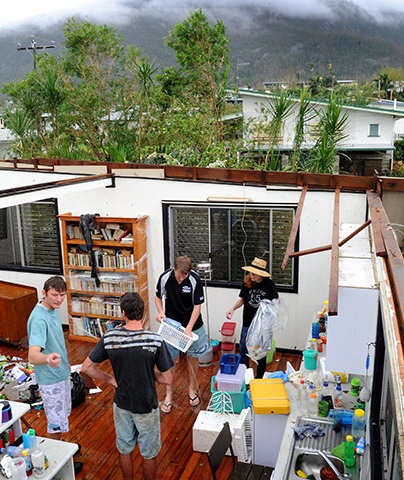Fires to rise but clouds unclear
 Experts have forecast increasing heatwaves and extreme bushfires as this century progresses, but the future of storms and rainfall is less clear.
Experts have forecast increasing heatwaves and extreme bushfires as this century progresses, but the future of storms and rainfall is less clear.
A comprehensive new study of Australian natural hazards in the journal Climatic Change documents the historical record and projected change of seven natural hazards in Australia; flood, storms (including wind and hail), coastal extremes, drought, heatwave, bushfire, and frost.
“Temperature-related hazards, particularly heatwaves and bushfires, are increasing, and projections show a high level of agreement that we will continue to see these hazards become more extreme into the 21st century,” says journal editor Associate Professor Seth Westra, Head of the Intelligent Water Decisions group at the University of Adelaide.
“Other hazards, particularly those related to storms and rainfall, are more ambiguous. Cyclones are projected to occur less frequently but when they do occur they may well be more intense. In terms of rainfall-induced floods we have conflicting lines of evidence with some analyses pointing to an increase into the future and others pointing to a decrease.
“One thing that became very clear is how much all these hazards are interconnected. For example drought leads to drying out of the land surface, which in turn can lead to increased risk of heat waves and bushfires, while also potentially leading to a decreased risk of flooding.”
The paper noted the particular importance of the links between climate extremes.
“On the open coast, rising sea levels are increasing the flooding and erosion of storm-induced high waves and storm surges,” says CSIRO’s Dr Kathleen McInnes, the lead author of the coastal extremes paper.
“However, in estuaries where considerable infrastructure resides, rainfall runoff adds to the complexity of extremes.”
The study seeks to pick apart the effects of climate variability and change on hazards, separating them from other factors like deforestation, increased urbanisation, people living in more vulnerable areas, and higher values of infrastructure.
“The frequency and severity of Australian natural hazards ... cause multiple impacts on humans and the environment and collectively account for 93 per cent of Australian insured losses, and that does not even include drought losses,” A/Prof Westra says.
Key findings from the natural hazards update include:
- Historical information on the most extreme bushfires – so-called “mega fires” – suggests an increased occurrence in recent decades with strong potential for them to increase in frequency in the future. Over the past decade major bushfires at the margins of Sydney, Canberra, and Melbourne have burnt more than a million hectares of forests and woodlands and resulted in the loss of more than 200 lives and 4000 homes
- Heatwaves are Australia’s most deadly natural hazard, causing 55per cent of all natural disaster related deaths and increasing trends in heatwave intensity, frequency and duration are projected to continue throughout the 21st century
- The costs of flooding have increased significantly in recent decades, but factors behind this increase include changes in reporting mechanisms, population, land-use, infrastructure as well as extreme rainfall events. The physical size of floods has either not changed at all, or even decreased in many parts of the country.
An entire special issue of the journal has been dedicated to 'The effect of historical and future climate changes on natural hazards in Australia'.








 Print
Print